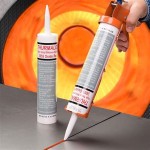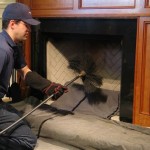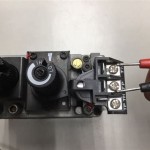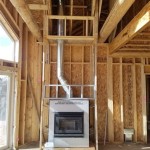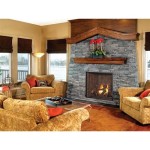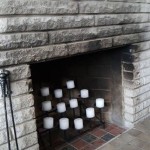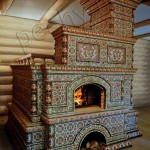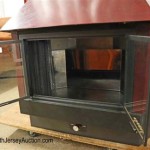Understanding Open Fireplace Chimney Dampers
The chimney damper, a crucial component of an open fireplace system, regulates airflow within the chimney. It is a movable plate or valve typically located just above the firebox, designed to seal the chimney when the fireplace is not in use and to control draft during a fire. A properly functioning damper contributes significantly to energy efficiency, prevents wildlife intrusion, and ensures safe fireplace operation.
The design and mechanics of chimney dampers have evolved over time, but the fundamental purpose remains unchanged: to provide a means of controlling the passage of air and gases through the chimney flue. Variations in damper design influence their efficiency, longevity, and ease of use.
Types of Chimney Dampers
Several types of chimney dampers exist, each offering distinct advantages and disadvantages. Understanding these differences is crucial for selecting the appropriate damper for a specific fireplace and chimney system.
Throat Dampers: These are the most common type, typically found within the firebox just above the fire chamber. They consist of a metal plate hinged on one or both sides, operated by a lever or poker extending into the firebox. Throat dampers are relatively inexpensive and easy to install, but they often suffer from poor sealing and are prone to rust and warping due to their proximity to the fire.
The primary mechanism of a throat damper involves manipulating the lever to open or close the metal plate. When closed, the plate rests against the walls of the firebox throat, ideally creating an airtight seal. However, imperfections in the plate's shape, corrosion, or soot buildup can compromise this seal. Open, the plate pivots upward, allowing smoke and exhaust gases to vent through the chimney flue. Proper adjustment is critical for optimal draft and to prevent smoke from entering the room.
Top-Sealing Dampers: Also known as chimney top dampers or flue top dampers, these are installed at the very top of the chimney. They offer a superior seal compared to throat dampers, significantly reducing heat loss and preventing drafts when the fireplace is not in use. Top-sealing dampers typically consist of a rubber gasket and a metal lid, operated by a long cable or chain that extends down the chimney flue to a handle near the fireplace.
The advantage of top-sealing dampers lies in their ability to completely seal the chimney opening. The rubber gasket conforms to the chimney's shape, preventing air leakage far more effectively than a throat damper. This leads to substantial energy savings, particularly in colder climates. Furthermore, top-sealing dampers often incorporate a mesh screen to prevent birds, squirrels, and other animals from entering the chimney.
The operating mechanism of a top-sealing damper involves pulling the cable or chain to lower the metal lid onto the chimney opening. The lid presses against the rubber gasket, creating a tight seal. Releasing the cable or chain raises the lid, allowing the chimney to function normally during a fire. Regular inspection of the cable, chain, and gasket is necessary to ensure proper functioning and prevent corrosion or damage.
Lock-Top Dampers: A variation of the top-sealing damper, the lock-top damper offers added security against wind and unwanted entry. It features a locking mechanism that secures the lid in the closed position, providing extra protection against strong winds forcing the damper open. This type is particularly useful in areas prone to high winds or severe weather.
The lock-top damper operates similarly to a standard top-sealing damper, but with the added feature of a locking mechanism. This mechanism typically involves a latch or pin that secures the lid in place. During periods of high winds, the locking mechanism can be engaged to prevent the wind from forcing the damper open, ensuring a tight seal and preventing drafts. Regular maintenance and lubrication of the locking mechanism are essential for its continued functionality.
Energy-Saving Dampers: These dampers are often custom-made and designed to provide an exceptionally tight seal. They may incorporate advanced materials and designs to minimize air leakage, further improving energy efficiency. While more expensive than standard dampers, they can offer significant long-term savings through reduced heating and cooling costs.
Energy-saving dampers often utilize materials with superior insulating properties and employ precision engineering to ensure a perfect fit. They may also incorporate features such as adjustable seals or multi-point locking mechanisms to maximize airtightness. These dampers are generally installed by professionals and require careful measurement and fitting to ensure optimal performance.
Importance of a Properly Functioning Damper
A properly functioning chimney damper is crucial for several reasons, impacting safety, energy efficiency, and overall comfort within the home.
Energy Efficiency: When closed, a well-sealing damper prevents heated or cooled air from escaping up the chimney. This significantly reduces energy waste and lowers heating and cooling bills. Conversely, an open or poorly sealing damper allows conditioned air to escape, increasing energy consumption and placing a strain on HVAC systems. The savings offered by a properly functioning damper can be substantial, especially in climates with extreme temperature variations.
An open chimney is essentially a large hole in the roof, allowing warm air to escape during the winter and cool air to escape during the summer. This continuous exchange of air forces the HVAC system to work harder to maintain a comfortable temperature, resulting in increased energy consumption. A properly sealed damper minimizes this air exchange, maintaining a more stable indoor temperature and reducing the demand on the HVAC system.
Safety: A closed damper prevents downdrafts, which can push smoke and dangerous gases, such as carbon monoxide, back into the house. It also helps prevent animals from entering the chimney and potentially becoming trapped or causing a fire hazard.
Downdrafts occur when air pressure outside the chimney is higher than inside, causing air to flow down the flue instead of up. This can push smoke, soot, and potentially deadly carbon monoxide back into the living space. A closed damper provides a barrier against downdrafts, preventing these harmful substances from entering the home. Furthermore, a closed damper prevents animals such as birds, squirrels, and raccoons from nesting in the chimney, which can create a fire hazard or block the flue.
Prevention of Water Damage: A top-sealing damper provides an additional layer of protection against rain and snow entering the chimney. This can prevent water damage to the firebox, chimney liner, and surrounding masonry. Water damage can lead to costly repairs and can compromise the structural integrity of the chimney.
Rain and snow entering the chimney can saturate the firebox and chimney liner, leading to corrosion, cracking, and deterioration of the masonry. This moisture can also seep into the surrounding walls and ceilings, causing mold growth and further structural damage. A top-sealing damper prevents water from entering the chimney, protecting the fireplace system from these damaging effects.
Maintaining and Troubleshooting Chimney Dampers
Regular maintenance and occasional troubleshooting are essential for ensuring the proper functioning and longevity of a chimney damper. Neglecting maintenance can lead to reduced efficiency, safety hazards, and costly repairs.
Regular Inspection: Dampers should be inspected at least once a year, preferably before the start of the heating season. Check for rust, corrosion, soot buildup, and any signs of damage. Ensure that the damper opens and closes smoothly and seals properly when closed.
Visual inspection is the first step in maintaining a chimney damper. Look for signs of rust, corrosion, cracks, or warping. Pay particular attention to the hinge mechanism and the sealing surface of the damper. Check for excessive soot buildup, which can interfere with the damper's operation. For top-sealing dampers, inspect the rubber gasket for cracks or deterioration. If any damage is detected, it should be addressed promptly to prevent further problems.
Cleaning: Soot and creosote buildup can interfere with the damper's operation and reduce its sealing effectiveness. Clean the damper regularly using a wire brush and chimney cleaning solutions. Be sure to follow safety precautions and wear appropriate protective gear during the cleaning process.
Soot and creosote are byproducts of burning wood and can accumulate on the damper and surrounding surfaces. This buildup can prevent the damper from closing properly and can also pose a fire hazard. Cleaning the damper involves carefully removing the soot and creosote using a wire brush and specialized chimney cleaning solutions. It is important to follow the manufacturer's instructions and wear appropriate protective gear, such as gloves and a dust mask, during the cleaning process.
Lubrication: Lubricate the damper's hinge mechanism with a heat-resistant lubricant to ensure smooth operation. This is particularly important for throat dampers, which are exposed to high temperatures. Regular lubrication prevents the hinge from seizing up and ensures that the damper opens and closes easily.
The hinge mechanism of the damper is subject to wear and tear, especially in throat dampers that are exposed to high temperatures. Applying a heat-resistant lubricant to the hinge helps to reduce friction and prevent the hinge from seizing up. Use a lubricant specifically designed for high-temperature applications to ensure that it does not break down or evaporate under the extreme conditions within the firebox.
Troubleshooting: If the damper is difficult to open or close, check for obstructions such as debris or soot buildup. If the damper does not seal properly, inspect the sealing surface for damage or distortion. In some cases, the damper may need to be adjusted or replaced.
Difficulty in opening or closing the damper is often caused by obstructions such as debris, soot buildup, or corrosion. Carefully inspect the damper and surrounding area for any obstructions and remove them. If the damper does not seal properly, it may be due to damage or distortion of the sealing surface. In this case, the damper may need to be adjusted or replaced. Consult with a qualified chimney sweep or fireplace technician for assistance with more complex troubleshooting and repairs.
Professional Inspection: It is recommended to have the fireplace and chimney, including the damper, professionally inspected at least once a year by a certified chimney sweep. A professional can identify potential problems and provide expert advice on maintenance and repairs.
A certified chimney sweep has the knowledge and experience to thoroughly inspect the entire fireplace system, including the damper, chimney flue, and firebox. They can identify potential problems that may not be apparent to the homeowner and provide expert advice on maintenance and repairs. Regular professional inspections are essential for ensuring the safe and efficient operation of the fireplace system.
In conclusion, understanding the different types of chimney dampers, their importance, and the necessary maintenance procedures is crucial for homeowners with open fireplaces. A properly functioning damper contributes significantly to energy efficiency, safety, and the overall enjoyment of a fireplace.

How To Open A Chimney Damper Traditional Fireplace Pros

What Is A Chimney Damper Full Service

How Do Fireplace Dampers Work Zoro Com

How To Use A Fireplace Damper The Right Way

The Purpose Of Your Chimney Damper Asheville Nc Environmental

What S The Purpose Of A Chimney Damper Where Is It Located

Fireplace Damper Repair Full Service Chimney Kansas City

Fireplace Flue Dampers Ensure Optimal On

How To Open A Chimney Damper Traditional Fireplace Pros

When Should You Close The Damper On A Fireplace Tips
Related Posts

